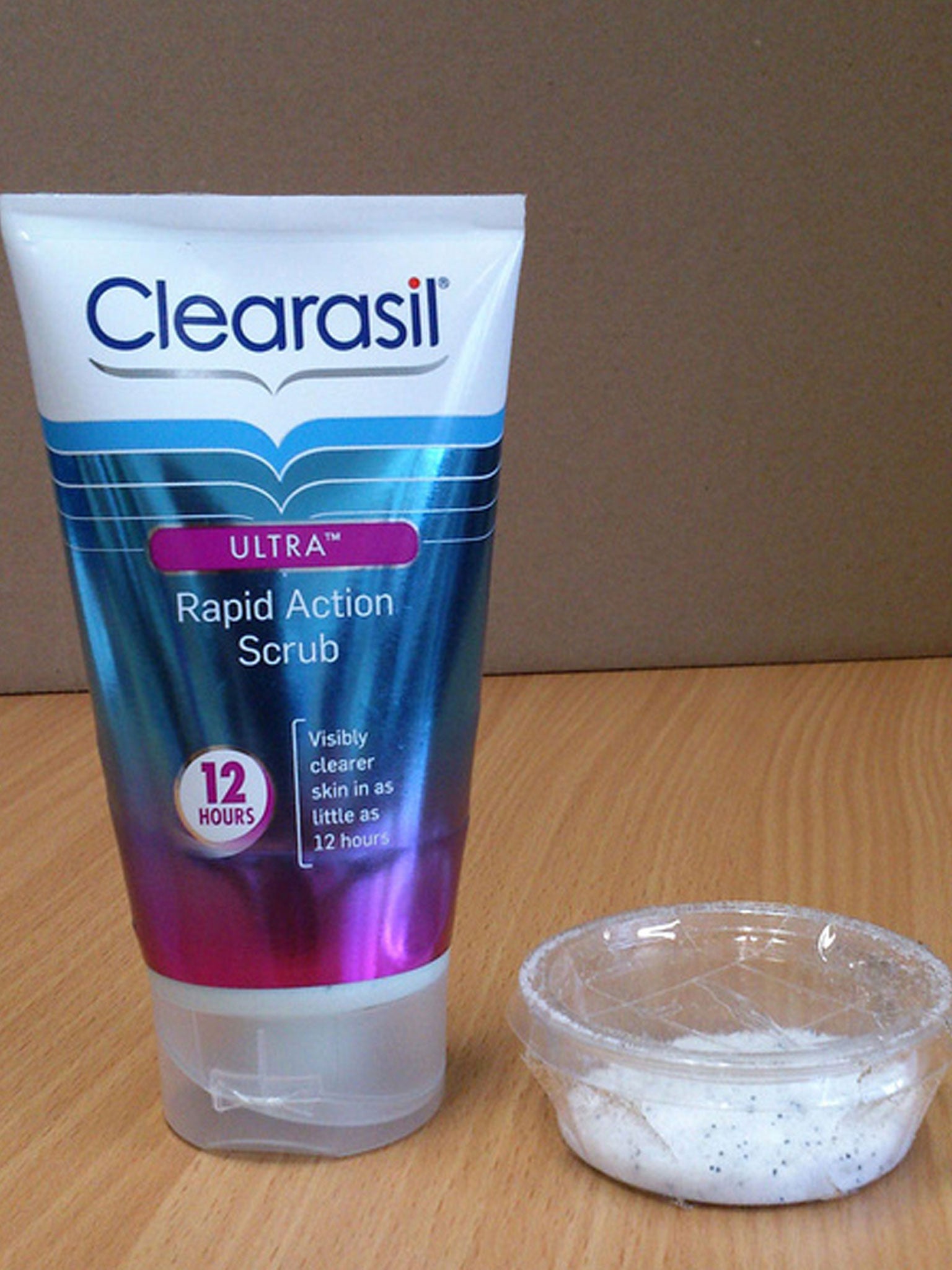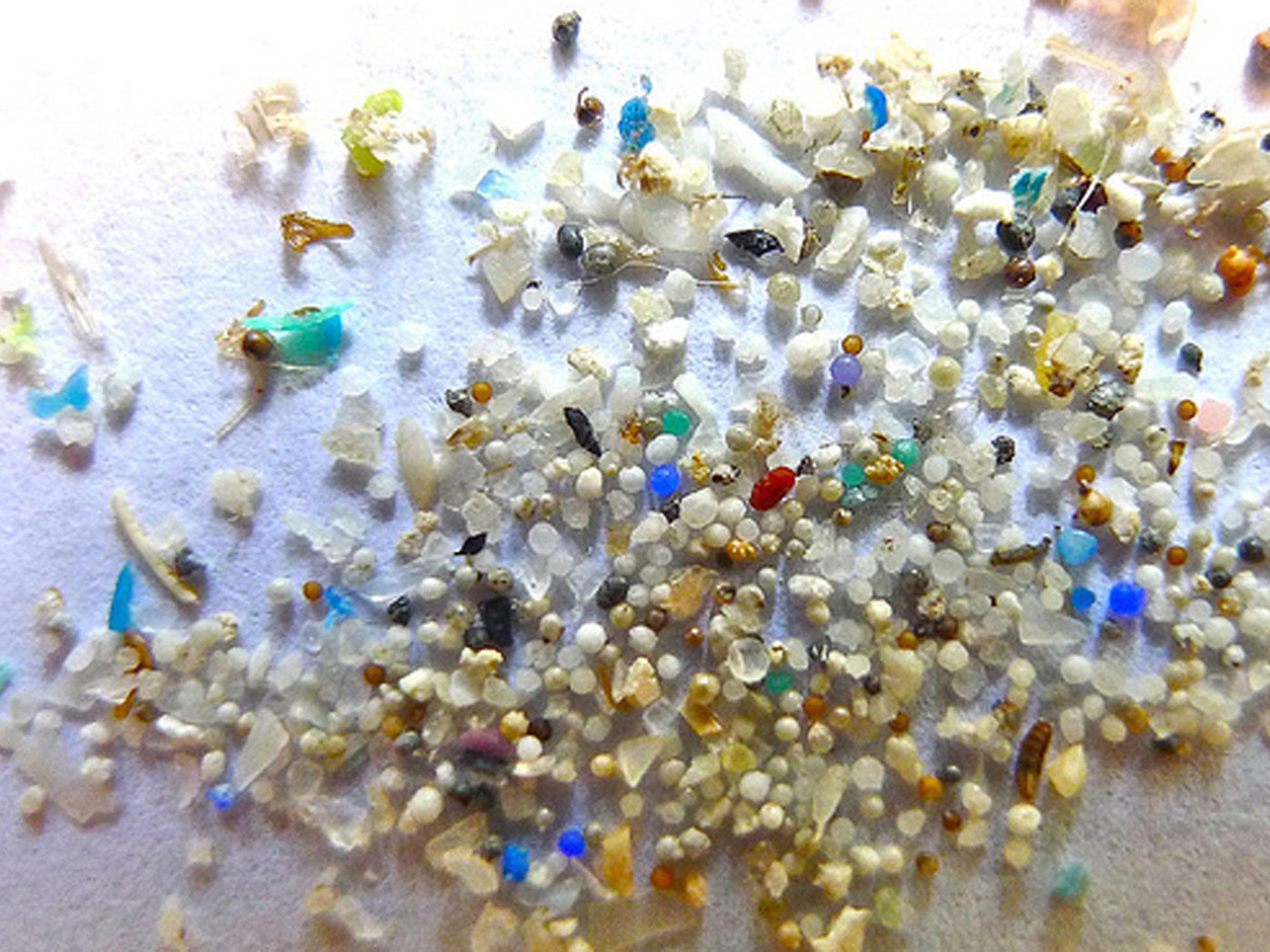Exclusive: Tiny plastic timebomb - the pollutants in our cosmetics
You probably didn't know they were there, but millions of tons of microbeads are being washed into the sea, up the food chain, and heading for the tuna on your plate

Your support helps us to tell the story
From reproductive rights to climate change to Big Tech, The Independent is on the ground when the story is developing. Whether it's investigating the financials of Elon Musk's pro-Trump PAC or producing our latest documentary, 'The A Word', which shines a light on the American women fighting for reproductive rights, we know how important it is to parse out the facts from the messaging.
At such a critical moment in US history, we need reporters on the ground. Your donation allows us to keep sending journalists to speak to both sides of the story.
The Independent is trusted by Americans across the entire political spectrum. And unlike many other quality news outlets, we choose not to lock Americans out of our reporting and analysis with paywalls. We believe quality journalism should be available to everyone, paid for by those who can afford it.
Your support makes all the difference.Millions of people are unwittingly pouring hundreds of tons of tiny plastic beads down the drain. These can persist in the environment for more than 100 years, and have been found to contaminate a wide variety of freshwater and marine wildlife, The Independent on Sunday can reveal.
Few consumers realise that many cosmetic products, such as facial scrubs, toothpastes and shower gels, now contain many thousands of microplastic beads which have been deliberately added by the manufacturers of more than 100 consumer products over the past two decades.
Plastic microbeads, which are typically less than a millimetre wide and are too small to be filtered by sewage-treatment plants, are able to carry deadly toxins into the animals that ingest them, including those in the human food chain such as fish, mussels and crabs, scientists said.
While many people have assiduously tried to recycle their plastic waste, cosmetics companies have at the same time been quietly adding hundreds of cubic metres of plastics such as polyethylene to products that are deliberately designed to be washed into waste-water systems – one estimate suggests that, in the US alone, up to 1,200 cubic metres of microplastic beads are washed down the drains each year.
Scientists and environmentalists have started lobbying the industry to stop using plastic microbeads in exfoliant skin creams and washes, but with limited success – a relatively small number of firms have publicly agreed to phase them out, and even then have given themselves several years to do so.
Britain, along with the rest of the EU, is being urged to follow the lead of New York State which last week became the first place in the world to prohibit the use of plastic micropellets in cosmetic products after a failure by the vast majority of personal-care companies to agree to an immediate voluntary ban.
The New York State Assembly decided to act after scientists found disturbing levels of microplastic beads in the Great Lakes of North America. The researchers said the beads arrived in waste water contaminated with the microplastic residues of more than 100 consumer products, including facial scrubs, soaps, shampoos and toothpaste.

"People are unwilling to sacrifice water quality just to continue to use products with plastic microbeads. I never met anyone who has wanted plastic on their face or in their fish," said Robert Sweeney, chair of the assembly's conservation committee, after last week's unanimous vote to ban the use of microbeads in personal-care products.
The House of Commons Science and Technology Committee last year heard evidence of the serious impact that microplastic waste could be having on Britain's aquatic environments. Some members of the committee are calling for tougher legislation if the cosmetics industry continues to prevaricate.
"There is no reason for these microplastics in cosmetic products and I think they should be phased out. If they are not taken out voluntarily, then there should be legislation to ban their use," said Graham Stringer MP, a member of the Commons committee.
The committee is due to meet next month to review its work on water quality, and some committee members want to press the cosmetics industry further on what it intends to do about phasing out plastic microbeads in personal-care products, Mr Stringer said.
Originally, the cosmetics industry used natural ingredients such as ground-up apricot kernels, crushed walnut shells and dried coconut as skin exfoliants – gentle abrasives that can remove dirt and dead layers of cells.
However, at some point in the late 1990s some companies quietly switched to plastic microbeads and the practice quickly spread to other firms and now includes most skin scrubs, polishes and soaps, even when they are not sold as skin exfoliants,
Microbeads, which are often labelled simply as "PE", "PP" or "PMMA" in the product ingredients, are now found in more than 100 toiletries and cosmetics. They are made by companies ranging from the big chemicals giants such as Johnson & Johnson, Procter & Gamble and Unilever, and supermarket chains such as Sainsbury's, Tesco and Marks and Spencer, to high-end cosmetics firms such as Clarins and L'Oréal.
Richard Thompson, professor of marine biology at Plymouth University, said that plastic microbeads washed into waste water are a needless source of contamination given that there are viable alternatives which have already been used to do much the same job in terms of skin exfoliation.

"These small particles, or microplastics, may produce a different sort of problem than larger fragments of plastic debris. We know that a range of organisms will eat these microplastics and the prevalence in populations of some species may reach 80 per cent," Professor Thompson said.
"Microplastic beads may also lead to the transfer of chemical contaminants into the animals that ingest the plastic. This is in addition to the physical damage done by the plastic itself," he said.
"Our work, for instance, has shown that mussels will retain ingested plastic particles for more than 48 days. Hence, there is potential for harm from both the physical presence of the plastic and any contaminants that may be transported with it," he said.
Professor Callum Roberts of the University of York told The IoS last night: "As plastics fragment into smaller pieces, they concentrate toxins. Microbeads are highly potent concentrators, feeding toxins into plankton at the bottom of the food web.
"These chemicals then biomagnify up the food web, and it ends up meaning the top predators have the highest concentration of this stuff, and the top predators are precisely the things we like to eat, like tuna and swordfish. It really is a case of what goes around comes around.
"The waste chemicals we thought we had got rid of are coming back to haunt us, and it won't be long before the fish we like to eat will be subject to health warnings for compounds like PCBs [polychlorinated biphenyl] or pesticides, as they already are for mercury.
"It's not just harmless roughage, there's a toxic load added."
Studies have shown that persistent organic pollutants, among them fat-soluble chemicals such as DDT and PCBs, stick to polyethylene microbeads, where they can become super-concentrated. Polyethylene is widely used as the abrasive microplastic in the cosmetics industry, Professor Thompson said.
Professor Ian Boyd of Brunel University, who is conducting research into microplastics in the aquatic environment, said that very little is known about the long-term effects of microplastic beads once they get into water courses and are ingested by aquatic wildlife.
"There's growing concern about microplastics and especially these beads. It's well known that as these beads get smaller, their surface area gets bigger in relation to their volume, which makes it easier for other substances to stick to them," Professor Boyd said.
"They are too small to be filtered by the sewer system and clearly some of the water companies are concerned about that," he added.
"Any new materials brought into the commercial world should be thoroughly investigated – and sometimes it's difficult to predict their effect until it begins to happen."
Join our commenting forum
Join thought-provoking conversations, follow other Independent readers and see their replies
Comments